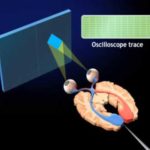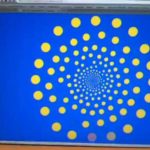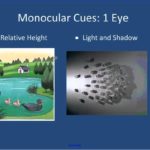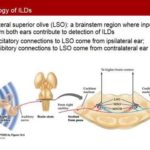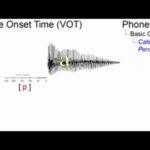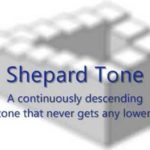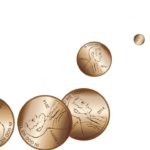Category: Perception
Vision
Vision is one of the senses that humans rely on most, and humans can perceive light within the range of 400 to 790 Terahertz. A network of light-sensitive nerve cells (photosensors) at the retina (at the back of the eye) … Continue reading →
McGurk Effect
The McGurk effect was first described in 1976 in a paper by Harry McGurk and John MacDonald entitled “Hearing Lips and Seeing Voices”, and is a perceptual phenomenon which demonstrates an interaction between hearing and vision in speech perception. The … Continue reading →
Phi Phenomenon
The phi phenomenon is an illusion where one perceives a continuous motion in separate objects displayed rapidly in succession. The phenomenom was identified by Max Wertheimer in his 1912 paper ‘Experimental Studies of the Perception of Motion’. Films and animation … Continue reading →
Depth Perception
Depth perception is the visual ability to perceive the world in three dimensions, enabling judgements of distance. Depth perception arises from a variety of depth cues, which are typically classified into monocular and binocular cues. Monocular cues can provide … Continue reading →
Perceptual Development
Perception is the ability of humans to acquire information from the world through their senses. Perceptual development refers to the development of these senses, and this takes place mainly during the first year of life, according to the majority of … Continue reading →
Auditory Localization
Auditory localization is the ability to locate a sound source in the environment, and humans can do this relatively well using hearing alone. We locate sounds using a set of cues. The individual cues are not sufficient in of themselves, but work … Continue reading →
Categorical Perception
Categorical perception is a phenomenon of perception in which an individual assigns boundaries to stimuli varying along a continuum. Categorical perception was first observed for auditory stimuli (speech sounds) but has since been found to be applicable to other perceptual modalities. … Continue reading →
Auditory Staircase Illusion or Shepard Tone
The auditory staircase illusion is an auditory illusion presented by the American cognitive scientist Roger Shepard in 1964. The computer-generated illusion creates a perception of a sound gradually falling in pitch, but where the pitch of the overall sound does not … Continue reading →
Weber’s Law or Fechner’s law or the Weber–Fechner law
Weber’s law is a principle law in psychophysics first proposed by Gustav Weber, and further formulated by his student Gustav Fechner. The law states that the sensation of a stimulus is proportional to the logarithm of the intensity of the stimulus causing … Continue reading →
Zöllner illusion
The Zöllner illusion is a visual illusion in which a line or long object appears to become distorted when superimposed onto a set of short, diagonal lines in parallel. See list of more visual and auditory illusions.
